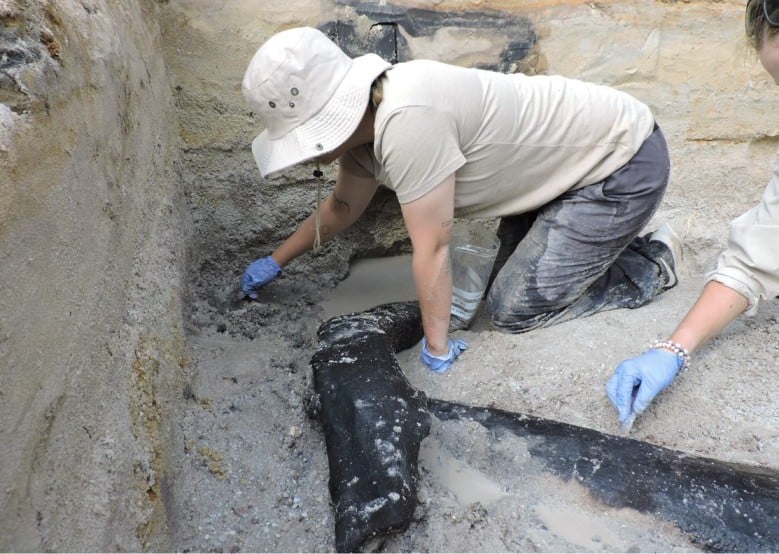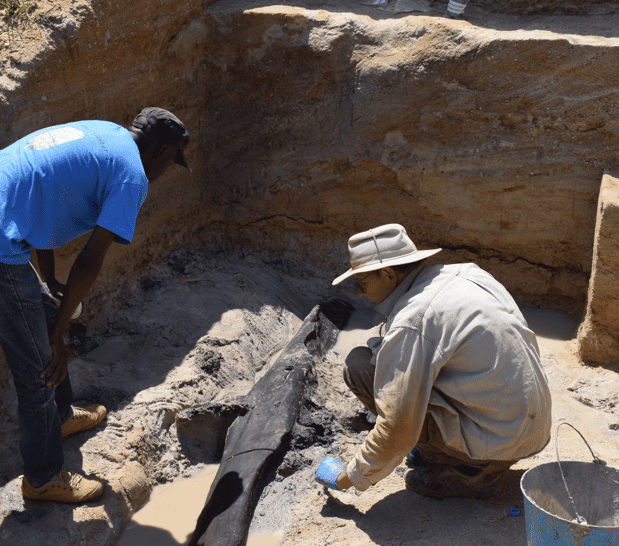Half a million years ago, much earlier than it was previously believed possible, a human species was using wood to build structures, according to a new study. The research reports on the dig of well-preserved wood at the archaeological site of Kalambo Falls in Zambia, dating back at least 476,000 years and predating the evolution of Homo sapiens.

The researchers said stone tool cut marks on the wood show that early humans shaped and joined two logs to make a structure, likely the foundation of a platform. This is the earliest evidence of the deliberate crafting of logs to fit together, as evidence for the human use of wood had been limited to its use for making fire, sticks and spears.
Wood is rarely found at ancient sites as it usually rots and disappears. However, the permanently high water levels at Kalambo Falls preserved this precious specimen. The finding also challenges the view that Stone Age humans were nomadic. At Kalambo, these humans would have had a lasting source of water and enough food to settle down and build permanent structures.
“This find has changed how I think about our early ancestors. Forget the label ‘Stone Age,’ look at what these people were doing: they made something new, and large, from wood. They used their intelligence, imagination, and skills to create something they’d never seen before,” Larry Barham, one of the study authors, said in a news release.
Ancient, mysterious wood
The wood found in Zambia was too old to be directly dated using radiocarbon techniques. Instead, the researchers at the University of Liverpool and Aberystwyth University used a technique called luminescence dating, which uses the last time minerals in the sand near the finds were exposed to sunlight to determine their age.
This method allows researchers to go much further back in time and gives “a glimpse into human evolution,” Geoff Duller, one of the study authors, said in a news release. Using luminescence dating, Duller found that the structure was 476,000 years old. They also dated four wooden tools found in the area (such as a wedge) at 324,000 years old.

The researchers don’t know which ancient human species made the structure and the tools, but it’s unlikely to have been Homo sapiens. The earliest fossils of Homo sapiens found so far date from around 300,000 years ago and were found in Israel, Dull told CNN. He believes the people who made the structure were cognitively sophisticated and it would be very exciting to figure out who constructed this.
Kalambo Falls is located on the Kalambo River, above a 235-meter waterfall on the border between Zambia and the Rukwa Region of Tanzania, at the edge of Lake Tanganyik. The area is a candidate to become a World Heritage Site from UNESCO for its archaeological significance. It was first excavated in 1960 by Prof. John Clark.
“Our research proves that this site is much older than previously thought, so its archaeological significance is now even greater. It adds more weight to the argument that it should be a United Nations World Heritage Site,” Duller said in a news statement, hoping to continue making discoveries in the area in the coming years.
The study was published in the journal Nature.






